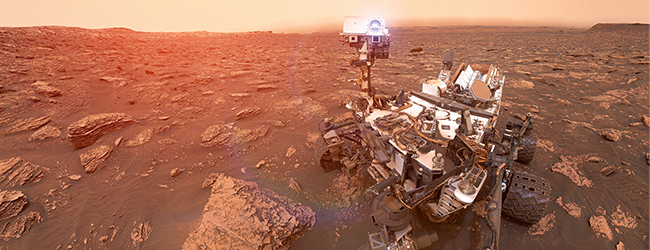Nye Lands on Mars with the Perseverance Rover
On July 30, 2020 the Mars Perseverance Rover launched immediately into its elliptical trip to Mars and along with it, a barrier film from Nye Lubricants. Nye Lubricants, which was acquired by FUCHS Lubricants, Co. in early 2020, is a manufacturer of specialty lubricants for space applications and other critical applications in the automotive, medical and semiconductor industries. The Mars Perseverance Rover uses the company’s NyeBar® Barrier Film formulation which plays a critical role in preventing oil from migrating to the rover’s mast camera and compromising the image. The Mars Perseverance Rover successfully landed on February 18th, 2021 and was broadcasted live by NASA.

The Perseverance Rover will be “seeking signs of habitable conditions on Mars in the ancient past” as well as “signs of past microbial life,” according to the NASA website. The Perseverance Rover project was announced in 2012. “Due to the extensive development time required for space projects, it can often be years between when we sell a grease and when it actually launches. It always feels like a great accomplishment when we see these projects come to fruition,” says George Mock, president of Nye Lubricants.
Recommended whenever reliability or lubricant migration are a potential problem, NyeBar® fluorocarbon barrier films control oil creep and prevent corrosion. Liquids will spread upon or “wet” any surface where surface energy is higher than the surface tension of the fluid. Because of the very high surface energies of metals, fluids would be expected to spread or creep on any truly clean metal surface. By modifying the surface of a metal or other solid, in advance, with a stable, durable film of low surface energy, it is possible to retard the migration or creep of fluids on that surface. Wettability of surfaces can be controlled and protection can be obtained from very thin film coatings. Non-wettable with low surface tension, they act as a dam around the lubricated area to prevent oil migration and subsequent contamination of nearby, sensitive components and optics. Additionally, the lubricant also has extremely low outgassing properties which prevents the lens from fogging up. These properties play an important role in aerospace applications where parts cannot be routinely serviced.
This isn’t the first time Nye products have been sent into space. NyeBar® can also be found in the mast camera of the Mars Curiosity Rover which launched in 2011. Nye Lubricants has several other products used on the James Webb Telescope, GOES-R Series and International Space Station.
“Nye has invested significant time and resources into expanding our research and development efforts in the aerospace industry. Last year we launched our new Vacuum, Aerospace, Semiconductor Test Laboratory dedicated specifically to the formulation and validation of in-vacuum lubricants. We strive to innovate alongside of our aerospace customers who are working on more complex projects,” says Dr. Jason Galary, Director of Research, Development and Innovation at Nye Lubricants. “Nye is honored to have played a small part in this historic mission that will gather crucial information about conditions on Mars,” says Mock.
Originally published in Design World.


